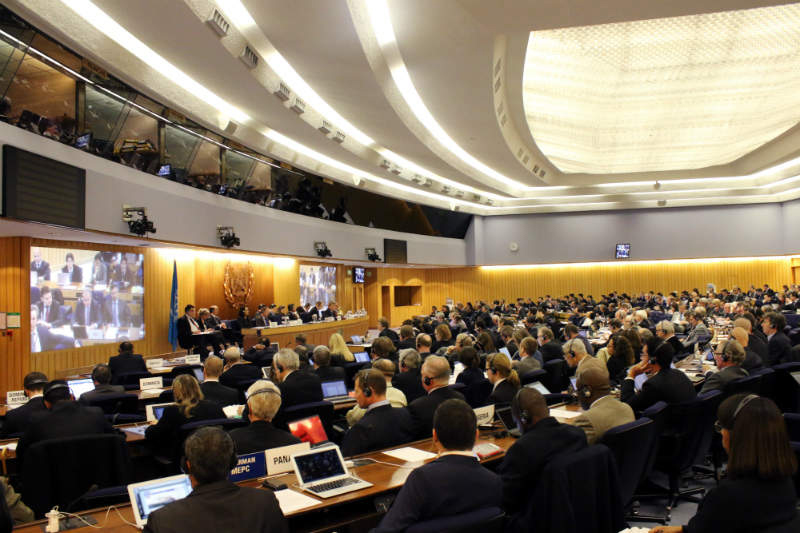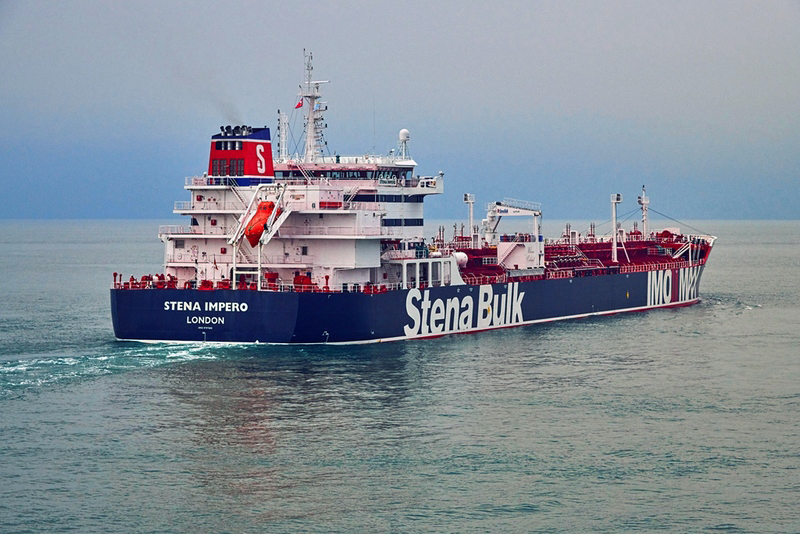Regulation
Emission impossible:
how the Covid-19 crisis is impacting IMO 2020 enforcement
IMO regulations governing the sulphur content of marine fuels came into force earlier this year, but what impact has the Covid-19 pandemic had on ports’ ability to enforce the new rules? Julian Turner talks to Beth Bradley, maritime law specialist and partner at commercial law firm Hill Dickinson.
Image:
On 1 April 2020,
with the unprecedented coronavirus lockdown in the UK barely two weeks old, the Maritime and Coastguard Agency (MCA) announced that it had suspended routine port state control inspections, including enforcing the International Maritime Organisation’s (IMO) 0.50pc sulphur cap.
The MCA said that it had also deferred routine inspections of compliance with the 0.1pc sulphur-capped Emission Control Areas (ECAs) – the North Sea and English Channel versions of which cover the majority of the UK’s east and south coasts – but would continue to monitor vessels that call at UK ports and inspect vessels if the information it received suggested that inspections were warranted.
Port authorities in the rest of Europe and worldwide have not stated so overtly that enforcing the environmental legislation is being sidelined as they prioritise health and the movement of freight.
However, according to Beth Bradley, maritime law specialist and partner at commercial law firm Hill Dickinson, a full picture of how well the global shipping industry is complying with IMO 2020 and the effectiveness of enforcement action will not emerge until after the Covid-19 pandemic has receded.
“The MCA has been pretty clear that they aren’t going to routinely check for IMO 2020 compliance, but my impression is that nowhere is testing or checking taking place in the way that it would have been had the pandemic not occurred,” she says.
“Ports aren’t advertising that this is the case, but it is a realistic position as they are hard-pressed in terms of staff numbers and are prioritising issues such as crew changeovers in the wake of Covid-19.
“I spoke to a US lawyer, for example, and there appears to be very real pressures there in terms of insufficient capacity at ports for checking IMO 2020 compliance. However, my feeling is that most companies are striving to comply, rather than avoid it or banking on the fact that no one will check.”

Beth Bradley, maritime law specialist at commercial law firm Hill Dickinson. Image: Hill Dickinson
Conventional thinking: Marpol Annex VI explained
The Marpol Convention governs the pollution potential of ships; Annex VI sets progressively stricter regulations to control vessel emissions, including sulphur oxides (SOx) and nitrous oxides (NOx).
Implemented on 1 January 2020, Regulation 14.1.13 of Marpol Annex VI states that the sulphur content of marine fuel used on ships must be reduced from 3.5% mass by mass (m/m) to 0.50% m/m for all vessels not fitted with exhaust gas cleaning systems (EGCS) or scrubbers. In parallel, SOx emissions are controlled in ECAs to stop the use of fuel with a sulphur content in excess of 0.10%.
The horizon issue is the Carriage Ban, effective on 1 March, which prevents any ship not fitted with an EGCS from carrying marine fuel with a sulphur content in excess of 0.50% m/m for use on board.
“Broadly, owners have two main choices available to meet the regulations – use very low-sulphur fuel (VLSFO) or get the vessel retrofitted with a scrubber – it depends very much on a company’s fleet profile,” says Bradley. “A large operator, for example, may have too many vessels to sensibly fit with scrubbers (both from a time and cost point of view) and so will plan on the basis of using a mix of scrubbers and VLSFO.
“Some large operators have also bought the capacity to refine their own product for the purpose of fuelling their vessels in accordance with the regulation.
In January, VLSFO was trading at $700 a tonne in Singapore and so looked as if it was going to be extraordinarily expensive
“Fitting a scrubber is quite expensive, since the vessel is not earning while the work is taking place. However, VLSFO was initially very expensive compared with high-sulphur fuel. So over, say, a ten-year period, many owners thought they would be in a better net position by fitting scrubbers, while others took a chance that the price differential between LSF and high-sulphur fuel would narrow.”
The difference in cost between high-sulphur fuel and VLSFO presents two potential issues. First, freight costs are likely to rise, which may in turn impact the trade of certain commodities. Secondly, there is a probable trade finance deficit for bunker suppliers arising from the steeper costs of LSF.
“In January, VLSFO was trading at $700 a tonne in Singapore and so looked as if it was going to be extraordinarily expensive, but the oil crisis and the fall in prices that began around six weeks ago had the knock-on effect of reducing the price considerably,” says Bradley.
“However, oil prices have started to rise again and that gap will widen, which is good or bad news, depending on where you are in the supply chain. Vessel owners will benefit from reduced OPEX, while on the other hand the change in prices will squeeze suppliers’ margins quite considerably.”

The new IMO 2020 regulations came into force on 1 January. Image: IMO
Image:
Issues with low-sulphur fuel oil
The availability and reliability of fuel supplies, as well as the quality of the new generation of VLSFOs, may also impact the ease with which vessels can comply with the IMO’s global sulphur limit.
“There were significant concerns in the run-up to implementation of the legislation as to whether there would be sufficient fuel available in enough locations, and while the big bunkering hubs are fine in terms of supply, some of the smaller ports still have issues obtaining fuel,” explains Bradley.
There was concern around the propensity for sediment due to the way fuels were blended to reduce the sulphur content
“The IMO has asked ships to file a fuel non-availability report (FONAR) when they obtain fuel, and while the FONAR rate slowed down after the carriage ban in March, there are still areas – Cuba, for example – where availability is a problem. However, one of the effects of Covid-19 has been lower demand for fuel, giving suppliers time to make sure there is sufficient quantity where it is needed.
“As for fuel quality, there was concern around the waxing point of VLSFOs and, more importantly, the propensity for sediment due to the way fuels were blended to reduce the sulphur content, which, if not caught in time, can lead to engine damage, and even failure or blackout,” she adds.

Stena Bulk announced plans in March to install exhaust gas scrubbers on 16 ships to comply with the January 2020 IMO sulphur cap deadline. Image: Stena Bulk
China crisis: retrofitting delays and Covid-19
We inevitably finish where we began, with the impact of Covid-19. The pandemic has led to serious delays to existing orders for the retrofitting of EGCS, particularly for vessels where the work was due to take place in Chinese shipyards, or to cancellations as owners and operators seek to slash costs.
“There were already significant delays because of the sheer volume of ships waiting to have scrubbers fitted, a situation exacerbated by Covid-19,” says Bradley. “In addition, thanks to the relatively low price of VLSFO, US and European owners are questioning the expense of fitting EGCS technology. Stolt-Nielsen, for example, recently announced it is cancelling some planned retrofitting projects.
“However, in terms of vessel numbers, only 3% of fleets have been fitted with scrubbers –rising to 15% by tonnage – meaning relatively few have already been, or are due to be, fitted with EGCS.”
There has also been a lot of debate around the fact that low-sulphur fuel isn’t a magic bullet in terms of reducing emissions
So, what impact does Bradley envisage the new sulphur cap having on international shipping, not to mention the wider environment – the ultimate aim of the legislation – in the medium to long term?
“As with the ECA in Europe in 2015, it was always going to take a year to 18 months for the real picture to emerge about how the IMO sulphur cap is working on a global basis,” she points out.
“There has also been a lot of debate around the fact that low-sulphur fuel isn’t a magic bullet in terms of reducing emissions because of a host of other carbonisation issues. The plan is that by 2040–50, fuelling vessels will be done in a much cleaner way, and I think the IMO sees the sulphur cap as an important first step towards cleaning up the industry from an environmental perspective.”